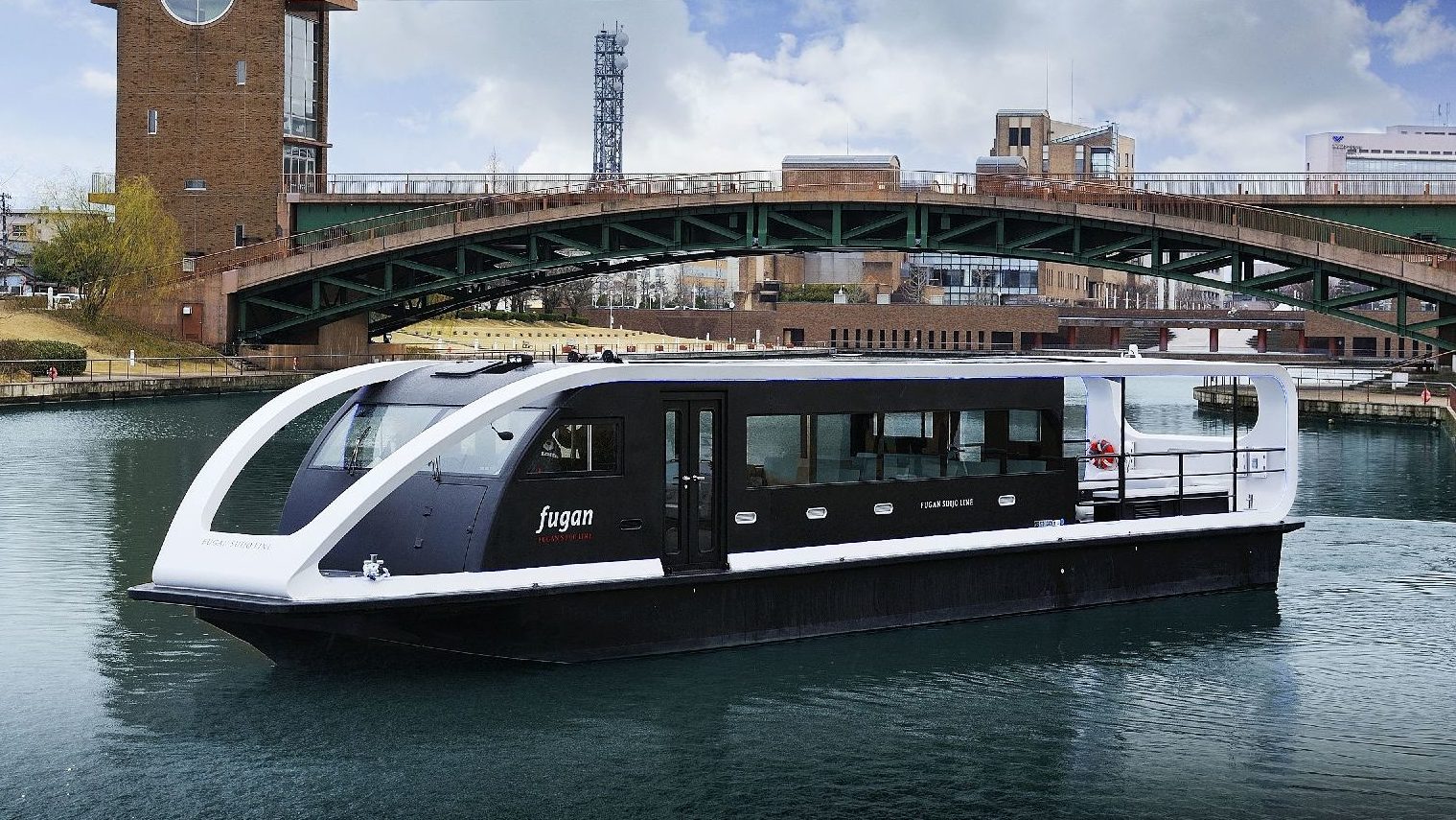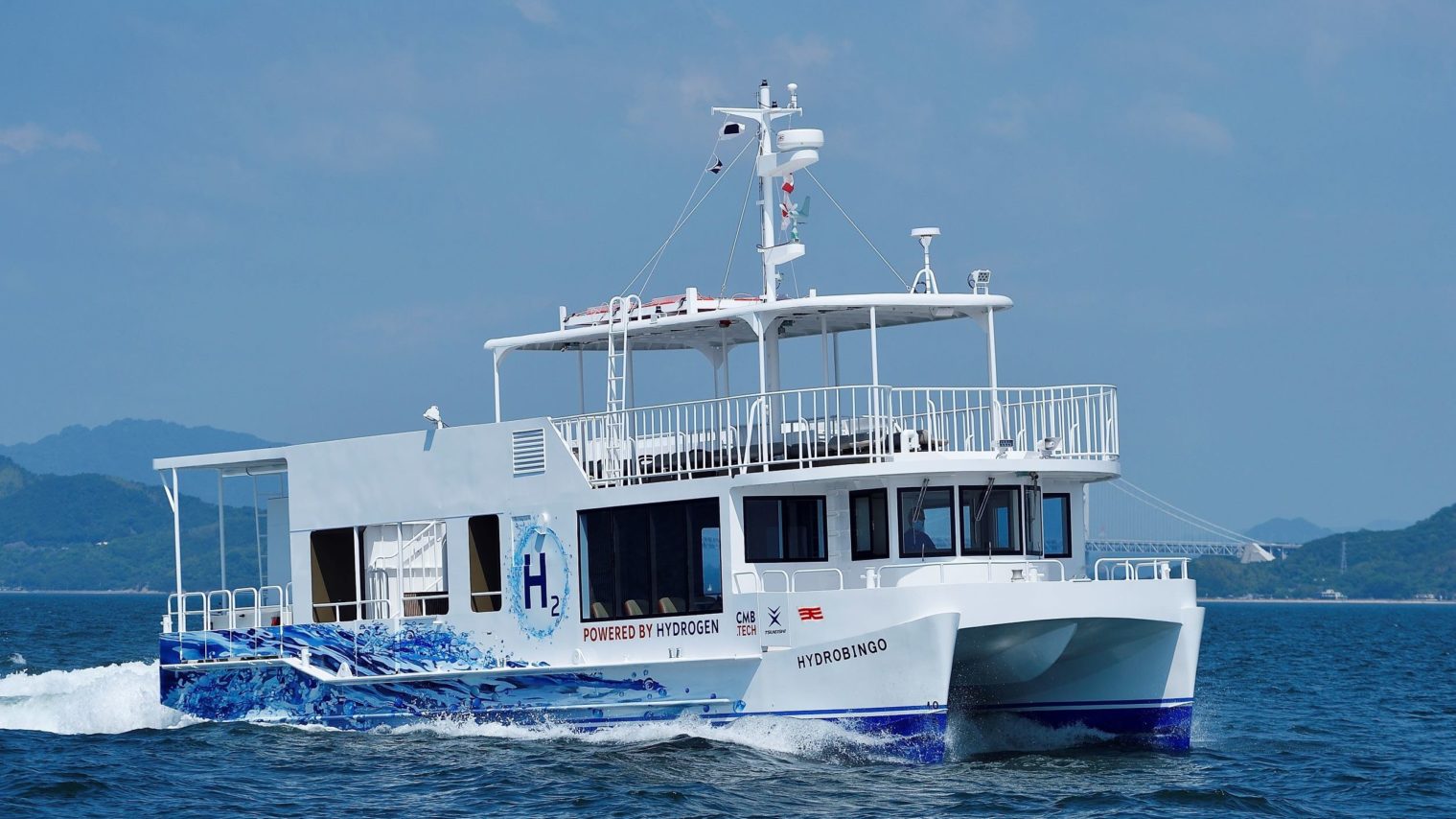PROJECT STORY
Using Tsuneishi’s Shipbuilding Legacy to Help Create a Carbon-Neutral Future
Tackling greenhouse gas emissions, a challenge for the maritime industry
A significant cause of global warming is the increasing levels of greenhouse gases (GHG*1) in the atmosphere. Carbon dioxide (CO2) accounts for the majority of these gases.
In terms of CO2 emissions per ton of cargo transported each mile, ships emit significantly less CO2 than other modes of transportation, making them the most efficient method. Nevertheless, global trade volumes continue to increase, causing CO2 emissions from shipping to grow year by year.
According to a greenhouse gas emissions report published by the International Maritime Organization (IMO)*2 in 2020, approximately 919 million tons of CO2 were emitted by international shipping in 2018, equivalent to 2.51% of all global greenhouse gas emissions. This is comparable to the entire annual CO2 emissions of Germany, the world’s sixth largest emitter.
Spurred by the 2015 Paris Agreement, the Initial IMO Strategy on the reduction of GHG emissions from ships (Initial IMO GHG Strategy) was adopted in 2016. The aim of the strategy is to decarbonize shipping and achieve zero emissions before the end of the century.
For the medium term, the strategy has set a target for emissions reduction per unit transport volume of 40% or more by 2030, compared to 2008. Starting in 2023, the target will apply to both newly built ships and those already in service. Accordingly, CO2 emission regulations in the maritime industry are becoming more stringent.
*1 GHG: Greenhouse Gas
*2 IMO: International Maritime Organization
Working to develop pioneering energy-saving ships that provide both economic efficiency and versatility
TSUNEISHI SHIPBUILDING has consistently taken on the challenge of creating customer value by achieving both economic performance and versatility.
The Tsuneishi Economical Standard Ship (TESS) series of bulk carriers has been popular with customers since the first ship was completed in 1984. As its name suggests, it features a hull shape that provides excellent fuel efficiency for economic performance, along with versatility that makes it easy to deploy. Unlike the customized production that was common in the shipbuilding industry up to that time, the company had developed a ready-made model, for more efficient shipbuilding. This economical standard ship shape was based on market research.
In 2004, we developed the KAMSARMAX bulker as a new ready-made ship in the Panamax class. This was the largest ship capable of passing through the Panama Canal, an important international shipping node. This bulker overturned conventional industry thinking at the time, since the largest possible Panamax-class vessels were considered to be the 70,000-ton class. By increasing the loading capacity to 82,000 tons, transportation efficiency was significantly improved. As a result, more than 300 of these bulkers have been completed to date, and it is a best-selling ship type with the top market share in its category. In response to the Panama Canal expansion project, the company has already developed and delivered the first WIDE KAMSARMAX, an 88,000 DWT bulk carrier.
Over the years, the ship’s hull shape has been refined to further reduce resistance caused by wind and waves, and its unique fuel efficiency improvement technologies have also been enhanced. As a result, fuel consumption per ton-mile has dropped by 31% compared to the first vessel launched in 2005. The history of TSUNEISHI SHIPBUILDING is characterized by the pursuit of economic performance and versatility.
Insatiable desire to create innovative products
The Energy Efficiency Design Index (EEDI)*3 provides a new shipbuilding standard to prepare for the coming carbon-neutral era. The index is used for estimating CO2 emissions for new ships during the design and construction stages. It estimates the fuel efficiency of a vessel, or more specifically, the number of grams of CO2 emitted per ton-mile, under certain conditions.
During the current Phase 2 of the EEDI, the regulations require ships to achieve a 20% CO2 emissions reduction compared to a standard value. TSUNEISHI SHIPBUILDING is already meeting the EEDI Phase 3 standard (i.e., a 30% reduction in carbon intensity), which is the requirement taking effect in 2025 for vessels under service contracts. Accordingly, the company has achieved a significant reduction in environmental impact while improving fuel efficiency.
These achievements have been made possible by TSUNEISHI SHIPBUILDING’s knowledge and expertise developed over decades. They are a result of our years of emphasis on economic performance and versatility, and our insatiable desire to create innovative products.
The company continues to maintain its advantages in terms of environmental performance, as well. This can be seen in our hull shape developments, represented by SEAWORTHY, which reduces wave resistance at the bow. Then there is our development and adoption of add-ons for improving fuel efficiency. These include the energy-saving device MT-FAST, which was jointly developed with MTI Ltd., a technology company of the NYK Group. They also include our Fresh Air Intake System (FAIS), which takes in air from outside the ship to improve engine combustion efficiency.
*3 EEDI: Energy Efficiency Design Index
Special hull shape reduces wind resistance image
Working toward carbon neutrality without fear of change
Our pursuit of environmental impact reduction by using existing technology to improve vessel fuel efficiency has yielded results that meet the targets set by current international regulations. However, in the quest to meet the upcoming requirement for carbon neutrality, we are approaching the limits of what can be achieved by merely extending the development of existing technologies. Therefore, the development of ships that use new fuels in line with global trends has become an urgent task.
TSUNEISHI SHIPBUILDING has already developed liquefied petroleum gas (LPG) carriers equipped with tanks developed in-house, as well as liquefied natural gas (LNG) powered limestone carriers. To explore even greater possibilities, the company has begun development of a net-zero emissions ocean-going vessel powered by ammonia. The project is being promoted in collaboration with Mitsui O.S.K. Lines, Ltd. and Mitsui E&S Shipbuilding Co., Ltd., and we are aiming for completion and initial operation around 2026.
Meanwhile, TSUNEISHI FACILITIES & CRAFT Co., Ltd., is building smaller vessels operating on new power and fuel sources to achieve zero emissions. These include electric boats equipped with lithium-ion batteries and vessels with hydrogen engines.
During the 120 years since its founding, the TSUNEISHI Group has helped launch multiple new eras for the shipbuilding industry. We will continue to take on the challenges of innovative shipbuilding by focusing on exciting possibilities. While promoting further development of our industry, we are striving to contribute to carbon-neutral shipping.
A net-zero emissions ocean-going vessel powered by ammonia, now being jointly developed with Mitsui O.S.K. Lines, Ltd. and Mitsui E&S Shipbuilding Co., Ltd. (artistic rendering)
A net-zero emissions ocean-going vessel powered by ammonia, now being jointly developed with Mitsui O.S.K. Lines, Ltd. and Mitsui E&S Shipbuilding Co., Ltd. (artistic rendering)
Hydro BINGO, a hydrogen-powered ferry

-1.png)
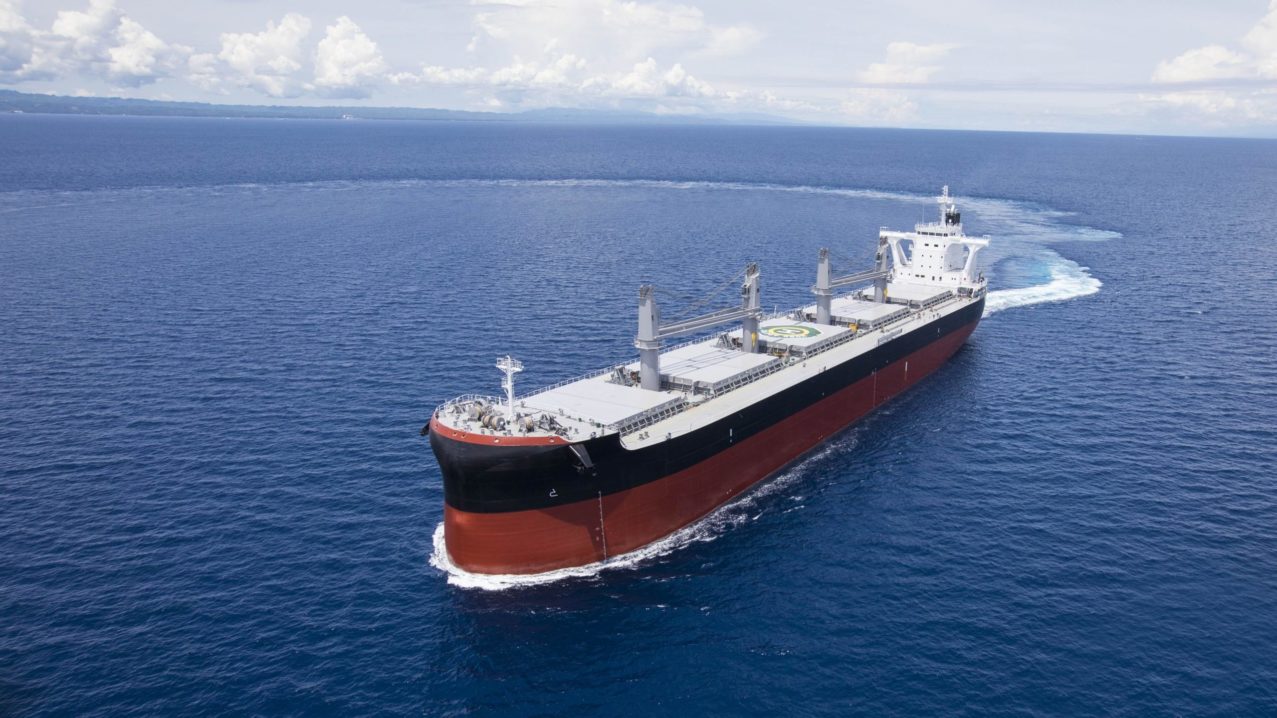
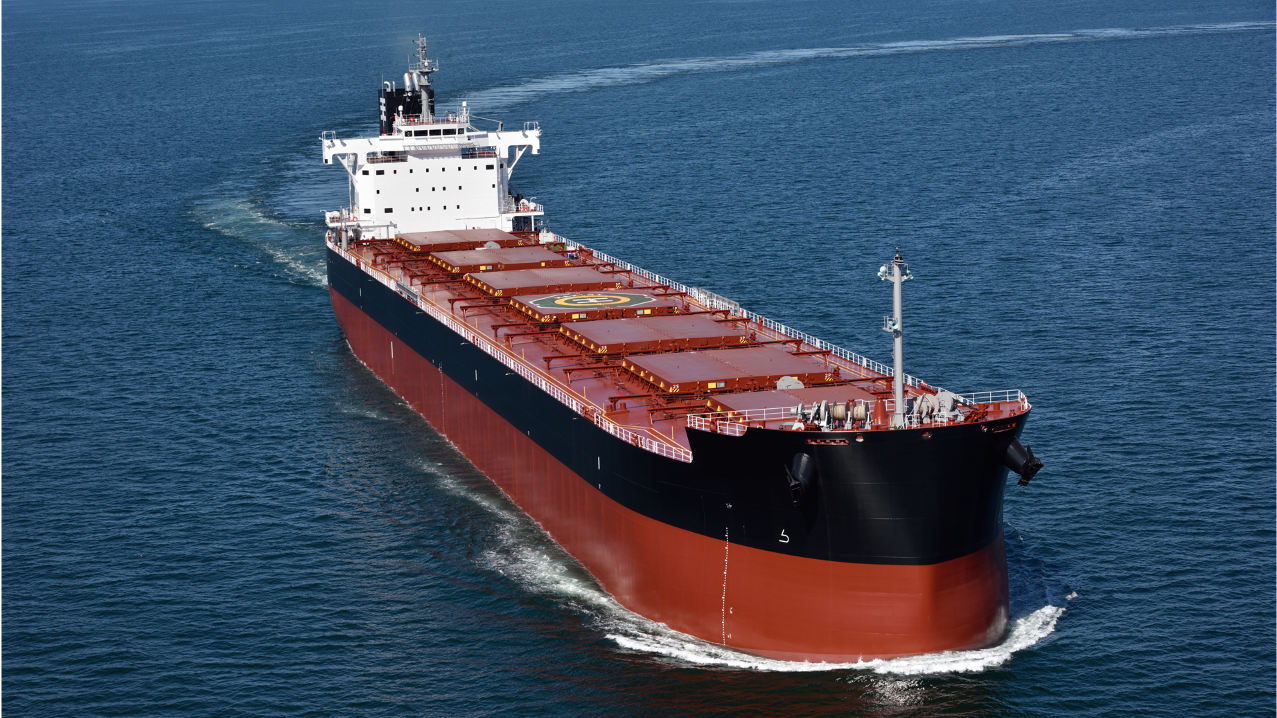
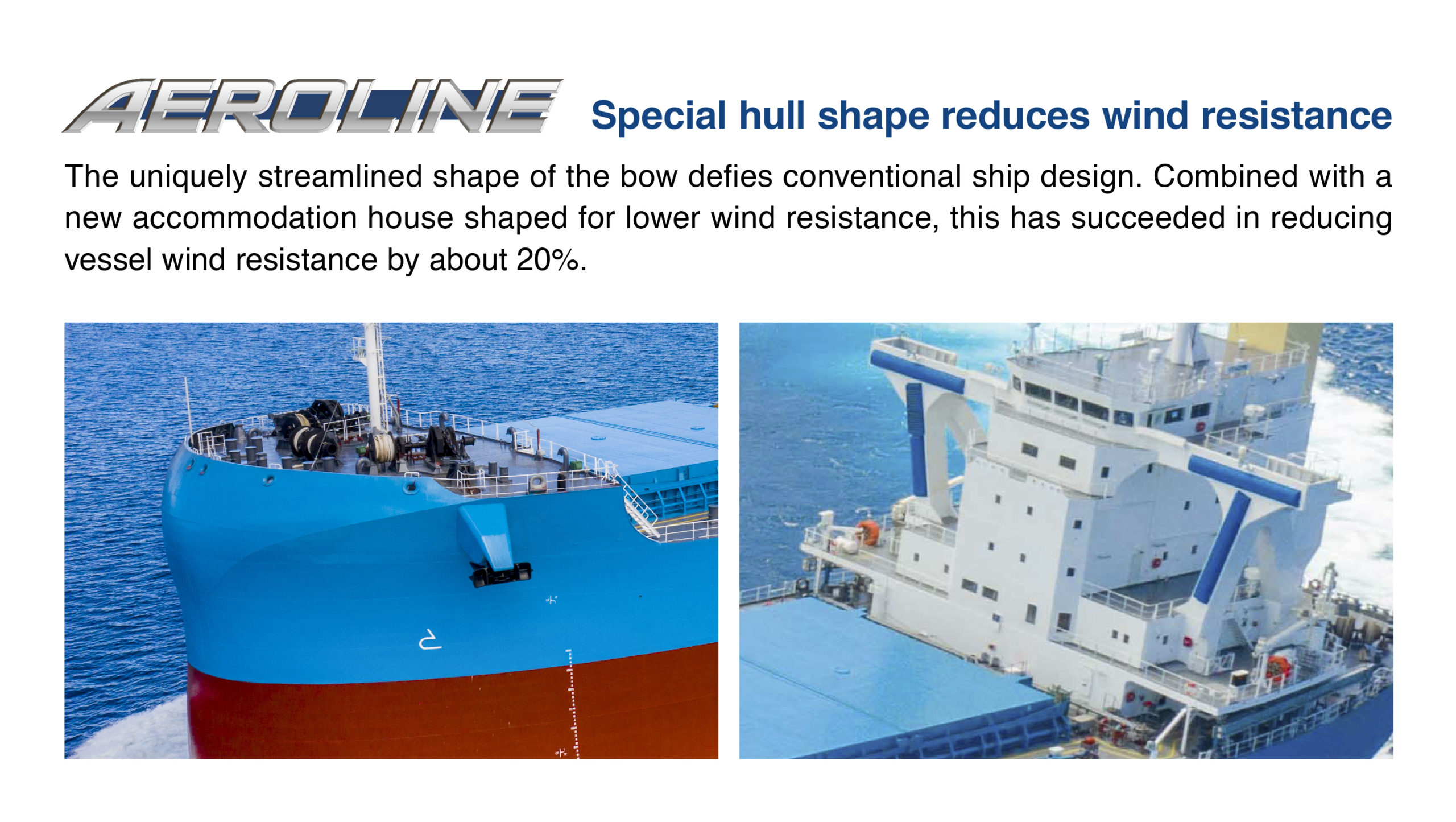
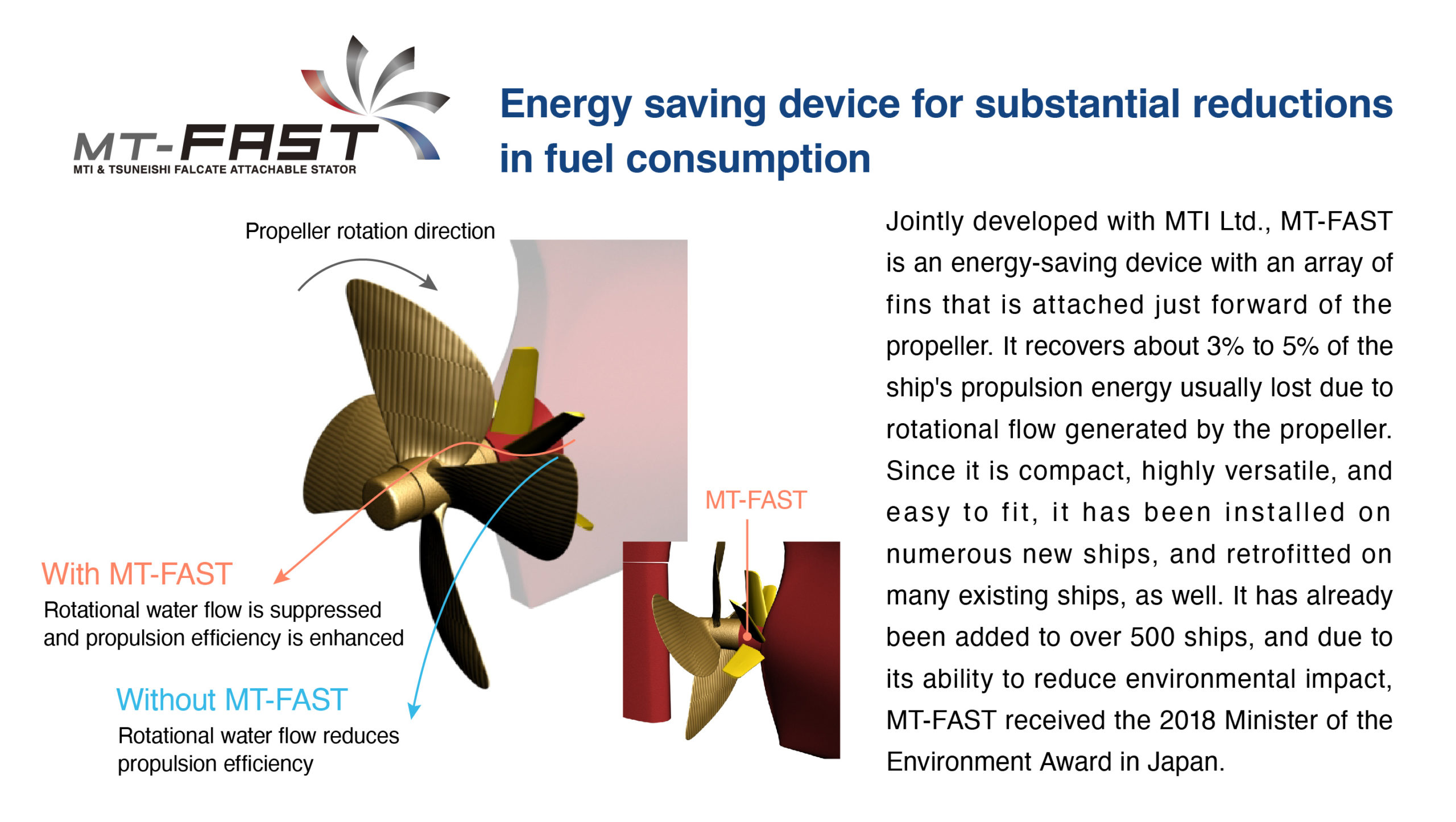
-2.jpg)
